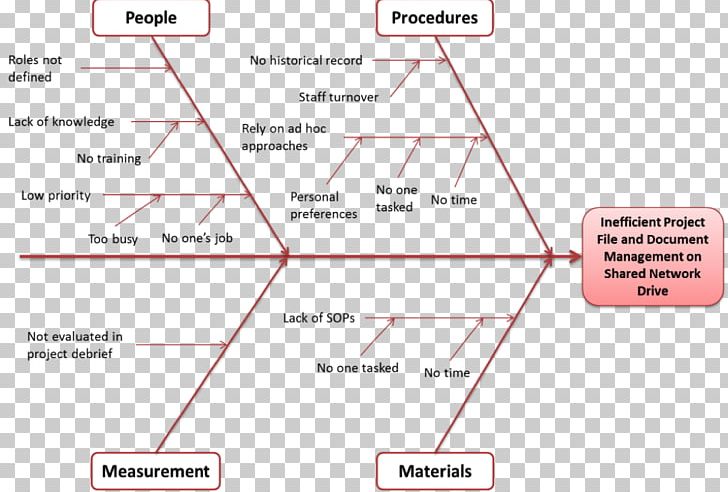

Each major branch of the diagram corresponds to a major cause (or class of causes) that directly relates to the effect. The primary branch represents the effect (the quality characteristic that is intended to be improved and controlled) and is labelled on the right side of the diagram. The issues in a Cause and Effect Diagram are often derived from a brainstorming session followed by the development of an Affinity Diagram. The Cause and Effect Diagram aims to show all the causes leading to some head event. It is an effective tool that allows people to easily see the relationship between factors to study, processes, situations, and for planning. Hint: Use check sheets to determine the frequencies of various causes, and scatter plots to test the strength of cause-effect correlation.A Cause and Effect Diagram (also called a Fish bone Diagram or Ishikawa Diagram) is used to provide a pictorial display of a list in which you identify and organise possible causes of problems, or factors needed to ensure success of some effort. Test for root causes by looking for causes that appear repeatedly within categories or across major categories. A good rule of thumb: When a cause is controlled by more than one level of management, remove it from the group. While you could likely brainstorm all day, however, it is important to know when to stop to avoid frustration. Treat each contributing factor as its own "mini-rib," and keep asking why each factor is occurring.Ĭontinue to push deeper for a clear understanding. Your team might lack expertise, for example, because of a lack of training, but also because you didn't hire the right people for the job. You may end up with multiple branches off of each successively smaller rib.

(More Information: Wikipedia: Five Whys.) 5. Your team may need more or less than five whys.

Sometimes this asking process is called the "Five Whys," as five is often a manageable number to reach a suitable root cause.

Connect them to the backbone, in "ribs." There is no specific number of steps or categories you might need to describe the problem some common categories are listed below.īrainstorm possible problem causes, and attach each to the appropriate rib. Draw a line with an arrow toward the head of the fish-this is the fish's "backbone."īrainstorm major categories of your process or procedure. Write the problem statement on the right side of your paper, at the head of the "fish." Your team will work out and away from this problem. Be specific about how and when the problem occurs. Problem Statementĭraft a clear problem statement, on which all team members agree.


 0 kommentar(er)
0 kommentar(er)
